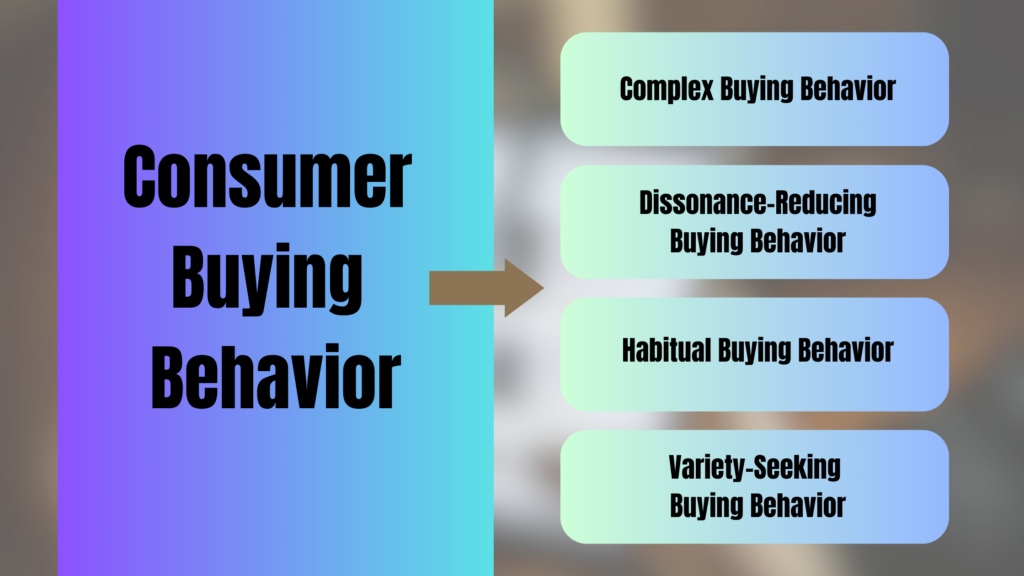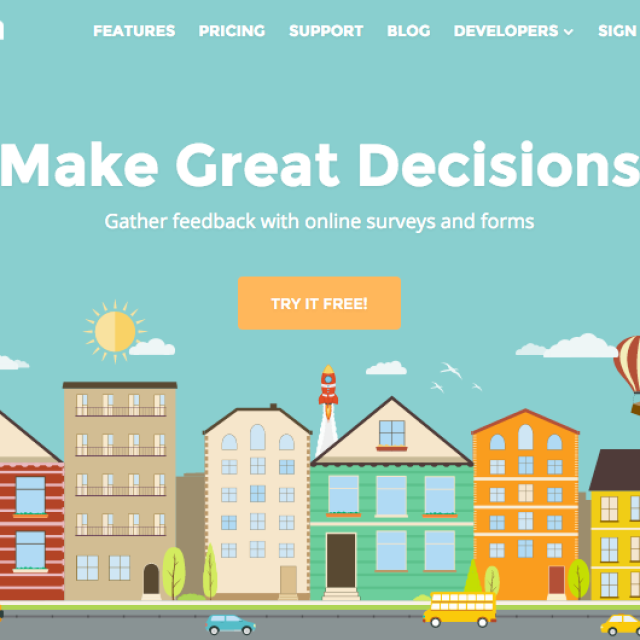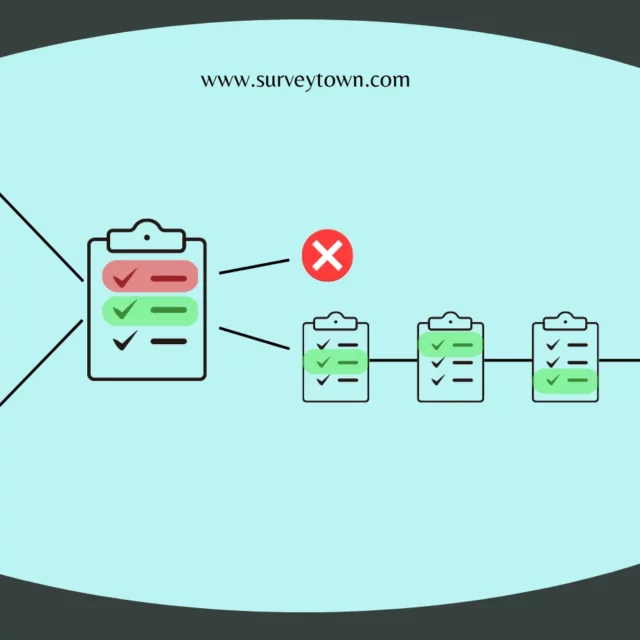Welcome to the captivating world of consumer buying behavior. Understanding how individuals make purchasing decisions is essential, and as an expert in this field, I’ve witnessed firsthand the fascinating process consumers go through when deciding what to buy. For businesses in sales and marketing, comprehending consumer buying behavior is crucial. By gaining valuable insights into what motivates consumers to purchase, companies can tailor their strategies to meet customer needs with precision. This knowledge empowers businesses to create targeted marketing campaigns, develop irresistible products or services, and ultimately boost sales.
Click here to check out our comprehensive article on consumer behavior!
In the upcoming sections, we’ll dive deep into different types of consumer buying behavior. We’ll explore the factors that influence these behaviors and equip you with techniques for effective identification. Additionally, we’ll discuss powerful strategies for leveraging this invaluable knowledge to achieve unparalleled success in your sales endeavors. So let’s embark on this enlightening journey without delay!
Types of Consumer Buying Behavior
To truly excel in marketing and sales, businesses must possess a deep understanding of the various types of consumer buying behavior. By grasping these nuances, companies can craft strategies that resonate with their target audience’s needs and desires. In this section, we will explore four key types of consumer buying behavior: complex, dissonance-reducing, habitual, and variety-seeking.
1. Complex Buying Behavior:
Complex buying behavior arises when consumers are heavily invested in the purchasing process due to the perceived significance or risk associated with a particular product or service. These purchases often involve high-value items like cars, houses, or top-of-the-line electronics. Consumers engage in extensive research and evaluation before making a decision.
Example: Picture yourself contemplating the purchase of a new car. You would likely spend countless hours scouring online resources for different models while devouring expert reviews and customer feedback alike. Multiple visits to dealerships for test drives and price comparisons would follow suit before finally sealing the deal on your dream ride.
2. Dissonance-Reducing Buying Behavior:
Dissonance-reducing buying behavior occurs when consumers experience post-purchase cognitive dissonance – that nagging feeling of uncertainty after making a significant purchase decision. To alleviate this discomfort, consumers seek reassurance through positive feedback from others or by gathering additional information about alternative options.
Example: Imagine you recently splurged on an expensive smartphone but find yourself questioning whether it was truly worth its weight in gold upon seeing advertisements for newer models boasting advanced features. To quell your doubts, you might turn to friends who own similar phones for their experiences or delve into online forums comparing different smartphone brands.
3. Habitual Buying Behavior:
Habitual buying behavior comes into play when consumers exhibit low involvement during routine purchases that require minimal effort or thought processes because they have already established unwavering brand loyalty over time through repeated positive experiences with a particular product or service.
Example: Consider your morning ritual of grabbing coffee on the way to work. You may automatically gravitate towards the same café every day without considering other options because you trust their quality and relish in their exceptional customer service. This habitual behavior is driven by convenience and familiarity.
4. Variety-Seeking Buying Behavior:
Variety-seeking buying behavior emerges when consumers actively seek new experiences, products, or brands to break free from monotonous purchasing patterns. These adventurous individuals are open to trying different options and revel in exploring alternatives.
Example: Let’s say you typically purchase the same brand of cereal week after week but suddenly feel an urge for something fresh at breakfast time. You might find yourself perusing through various cereal brands at the grocery store, searching for unique flavors or eye-catching packaging that piques your interest.

Understanding these four types of consumer buying behavior grants businesses invaluable insights into how customers make decisions and what factors influence their choices. By tailoring marketing strategies accordingly, companies can effectively engage with their target audience and unlock abundant sales opportunities along the way.
Factors Influencing Consumer Buying Behavior
To truly understand consumer buying behavior, it is essential to recognize the multitude of factors that influence purchasing decisions. These factors can be grouped into four main categories: psychological, personal, social, and cultural. By delving into how these factors impact different types of buying behavior, businesses can craft targeted marketing strategies that effectively reach their desired audience.
- Psychological factors encompass the internal influences on consumer behavior. They include perception, motivation, learning, beliefs and attitudes, and personality traits. Let’s explore some examples:
- Perception: How consumers perceive a product or brand greatly affects their decision-making process. This includes evaluating its quality, value for money, and overall appeal.
- Motivation: Understanding what motivates consumers to make a purchase is crucial in marketing efforts. Whether it’s fulfilling a need or desire for status or self-expression, tapping into these motivations can drive sales.
- Learning: Consumers learn from past experiences with products or brands, which shapes their future buying decisions. Marketers should consider this when developing advertising campaigns or introducing new products.
- Beliefs and Attitudes: Consumers’ beliefs about the benefits or drawbacks of a product play a significant role in influencing their purchasing decisions.
- Personality Traits: Different personality traits may lead individuals to prefer certain products over others.
- Personal factors are unique characteristics specific to each individual consumer that affect their buying behavior:
- Age and Life Stage: Different age groups have varying needs and preferences when it comes to purchasing goods and services.
- Occupation/Employment Status/Income Level: A person’s occupation often determines their income level, which impacts the type of products they can afford.
- Lifestyle/Hobbies/Interests: Individuals with similar lifestyles tend to exhibit similar consumption patterns as they seek out products that align with their interests.
- Social factors encompass external influences on consumer behavior arising from interactions with family members, friends, colleagues, and society as a whole:
- Family: The family unit plays a significant role in shaping consumer behavior. Factors such as the influence of parents, spouses, or children can impact purchasing decisions.
- Reference Groups: Consumers often seek validation from reference groups such as friends, colleagues, or online communities before making a purchase.
- Social Class: An individual’s social class can affect their preferences and buying habits. For example, individuals from higher social classes may prioritize luxury brands over more affordable options.
Understanding these factors is crucial for businesses looking to effectively target their desired audience. By tailoring marketing strategies to align with consumers’ psychological, personal, social, and cultural influences on buying behavior, companies can significantly increase their chances of success in the marketplace.
How To Identify Consumer Buying Behavior
Understanding consumer buying behavior is the key to unlocking success in today’s competitive market. As an expert, I know that identifying the various types of buying behavior empowers businesses to tailor their marketing strategies and sales approaches effectively. Let me share with you some techniques and strategies that will help you identify consumer buying behavior like a pro:
1. Conduct Comprehensive Market Research:
To truly understand consumer buying behavior, thorough market research is essential. This involves gathering data on customer demographics, psychographics, purchasing patterns, and preferences. By utilizing surveys, focus groups, interviews, and online analytics tools, you can gain valuable insights into your consumers’ behaviors.
2. Analyze Data Effectively:
Once you have collected relevant data through market research efforts, it’s crucial to analyze it effectively. Look for patterns or trends that indicate specific types of buying behavior among your target audience. Consider using statistical analysis software or hiring professionals who specialize in data analysis to help make sense of the information.
3. Actively Seek Customer Feedback:
One way to gain a deeper understanding of your customers’ motivations and decision-making processes is by actively seeking feedback from them through surveys or reviews. Pay attention to both positive and negative feedback, as they can reveal valuable insights about customer preferences.
4. Monitor Social Media Platforms:
In today’s digital age, social media platforms provide real-time information about your target audience’s opinions, interests, and behaviors related to your product or industry. Use social listening software tools to track mentions of your brand or industry keywords across various social media channels.
5. Analyze Purchase History Data:
Dive into past purchase history data from your existing customer base using CRM systems or other tracking tools available within e-commerce platforms such as Google Analytics or Shopify Insights Dashboard. This analysis will give you a better understanding of their previous purchasing habits.
6. Study Competitor Purchasing Habits:
Gain insight into the purchasing habits of consumers who buy from your industry competitors. Analyze competitor websites, read reviews on third-party sites like Yelp or Amazon.com, and even consider conducting mystery shopping exercises if applicable.
By implementing these expert techniques and strategies, businesses can gain valuable insights into consumer buying behavior. Armed with this knowledge, you can develop targeted marketing campaigns, create personalized customer experiences, and ultimately increase sales and customer satisfaction.
Leveraging Consumer Buying Behavior for Sales Success
To achieve unparalleled success in sales, it is imperative to understand and harness the power of consumer buying behavior. By delving into the intricacies of how consumers make purchasing decisions and what factors influence their choices, you can position your products or services in a way that perfectly aligns with their needs and preferences. Here are some expert strategies that will empower you to leverage consumer buying behavior for unrivaled sales success:
1. Segment Your Target Audience:
Begin by segmenting your target audience based on their unique buying behaviors. Identify distinct groups of consumers who exhibit similar patterns in their decision-making process. This segmentation will enable you to create laser-focused marketing campaigns and craft personalized messaging that deeply resonates with each group.
2. Customize Your Offerings:
Once you have segmented your target audience, tailor your offerings to cater specifically to their individual needs and preferences. For instance, if you are targeting habitual buyers who prefer routine purchases, prioritize convenience and loyalty programs that foster repeat business.
3. Create a Sense of Urgency:
Many consumers possess an insatiable desire for variety, constantly seeking new experiences or products. To captivate this type of buyer, generate a sense of urgency through limited-time offers or exclusive deals that compel them to take immediate action.
4. Provide Social Proof:
When making purchasing decisions, consumers often rely on social proof as a guiding force. Showcase glowing reviews, testimonials from satisfied customers, or endorsements from influential figures within the industry to establish trustworthiness and credibility around your brand.
5. Personalize the Customer Experience:
Harness the power of data analysis techniques such as customer profiling and purchase history tracking to elevate personalization in the customer experience even further. Tailor product recommendations or promotional offers based on individual preferences and past behaviors.
6. Cultivate Emotional Connections:
Emotions wield immense influence over consumer decision-making processes; therefore, cultivating deep emotional connections with potential buyers can prove highly effective in driving sales success.
7. Offer Exceptional Customer Service:
Regardless of the type of consumer buying behavior exhibited, providing exceptional customer service is paramount. By offering personalized assistance, promptly addressing concerns, and going above and beyond to exceed customer expectations, you can forge long-lasting relationships that result in repeat business and positive word-of-mouth referrals.
Case Studies Showcasing Successful Application of These Strategies:
- Through meticulous segmentation based on buying behavior, a company identified a group of consumers who displayed dissonance-reducing behavior. They tailored their marketing messages to address any doubts or uncertainties about their product’s performance compared to competitors. This approach led to increased sales and heightened customer satisfaction.
- Recognizing the variety-seeking behavior prevalent among their target audience, one brand launched limited-edition products adorned with exclusive packaging designs for a restricted time period only. This ingenious strategy instilled a sense of urgency among consumers seeking unique experiences, resulting in soaring demand and amplified sales during the promotional period.
In conclusion, comprehending consumer buying behavior is an indispensable key to unlocking unparalleled sales success. Continue your journey towards mastery by staying abreast of evolving trends in consumer buying behavior through regular market research and industry updates. Implementing these expert strategies will position you ahead of the competition while fostering robust relationships with your valued customers.




